The Magic and Mystery of Japanese Ink Painting and Calligraphy
written by art historian & curator
Japanese ink painting and calligraphy are interrelated art forms that embody the profound magic and mystery of traditional Japanese aesthetics. These two old practices not only serve as creative expressions but also represent a deep philosophical and spiritual journey. Through the use of ink, brush, and paper, artists convey emotions and explore the intricacies of existence.
Videos you may enjoy as well:
Sumi-e (Japanese ink painting) and shodō (Japanese calligraphy) are magical not just because of their visual beauty, but because they capture the essence of Japanese culture, spirituality, and philosophy. These art forms go beyond aesthetics to tap into the deep connection between the artist, nature, and the cosmos. The magic in sumi-e and shodō lies in their simplicity, spontaneity, and ability to convey complex emotions and meanings with minimal brushstrokes. Let us dive into the mysteries of two old artistic rituals to understand the meaning of life in a magical journey.
Origins
The origins of Japanese ink painting and calligraphy can be traced back to ancient China, where ink and brush techniques flourished. These art forms were introduced to Japan around the 7th century, evolving uniquely within the Japanese cultural landscape. Over the centuries, sumi-e and shodō became integral to Japanese art, influencing various other forms, including poetry, ceramics, and textile design. Shodō, or the way of writing, emphasizes the beauty of the written word. Each character is not merely a form of communication but a work of art in itself, reflecting the artist’s inner state and emotional depth. Sumi-e, on the other hand, emphasizes the spontaneity of brushwork and the beauty of imperfection, capturing fleeting moments and the essence of subjects with minimal strokes.
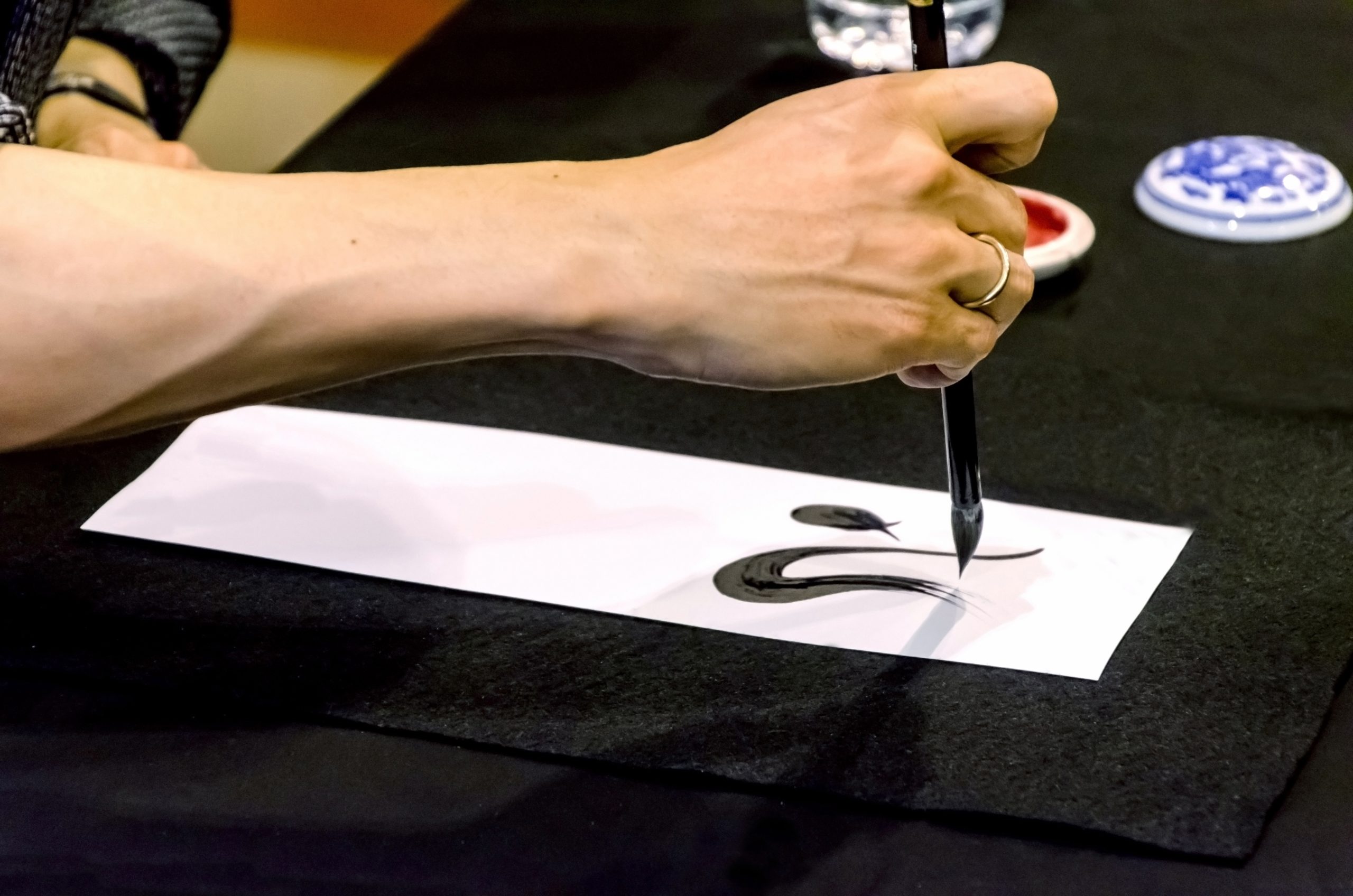
At the heart of sumi-e and shodō lies a philosophy that intertwines art with spirituality. Influenced by Zen Buddhism, these art forms emphasize mindfulness and the connection between the artist and nature. Artists are encouraged to cultivate a deep awareness of their surroundings and their inner selves, allowing their emotions and experiences to flow through their brushwork. In sumi-e, this connection manifests through the practice of capturing the essence of a subject rather than merely its physical appearance. Artists often seek to portray the ”spirit” of a scene, whether it be a mountain, a flower, or an animal. This approach aligns with the Zen principle of simplicity, focusing on the beauty found in minimalism and the transience of life. Sounds rather magical than artistic, right?
Similarly, shodō emphasizes the importance of each brushstroke, representing the artist’s thoughts and emotions at that moment. The act of writing becomes a meditative practice, inviting the artist to be fully present and engaged with the creative process. Each character embodies the artist’s spirit, imbuing the written word with a sense of life and energy.
Techniques and materials
An important part of the magic of sumi-e and shodō lies in their unique techniques and materials. Both art forms employ ink (made from soot mixed with a binding agent), brushes, and washi (Japanese paper). In sumi-e, artists often use various brush techniques to achieve different effects. The brush’s pressure, angle, and speed create a wide range of textures and tones, allowing artists to express subtle nuances in their work. The ink itself can be diluted to produce varying shades, enhancing the depth and richness of the painting. Artists work in a state of flow, where their brush moves instinctively, reflecting their connection to the subject matter. Shodō also employs these techniques, but the focus is on the rhythm and movement of the brush. Calligraphers practice various styles, each with unique characteristics, ranging from the flowing lines of kaisho (standard script) to the expressive forms of gyo-sho (semi-cursive script). The brushwork in calligraphy emphasizes balance, harmony, and the aesthetic of space, transforming each character into a dynamic composition.
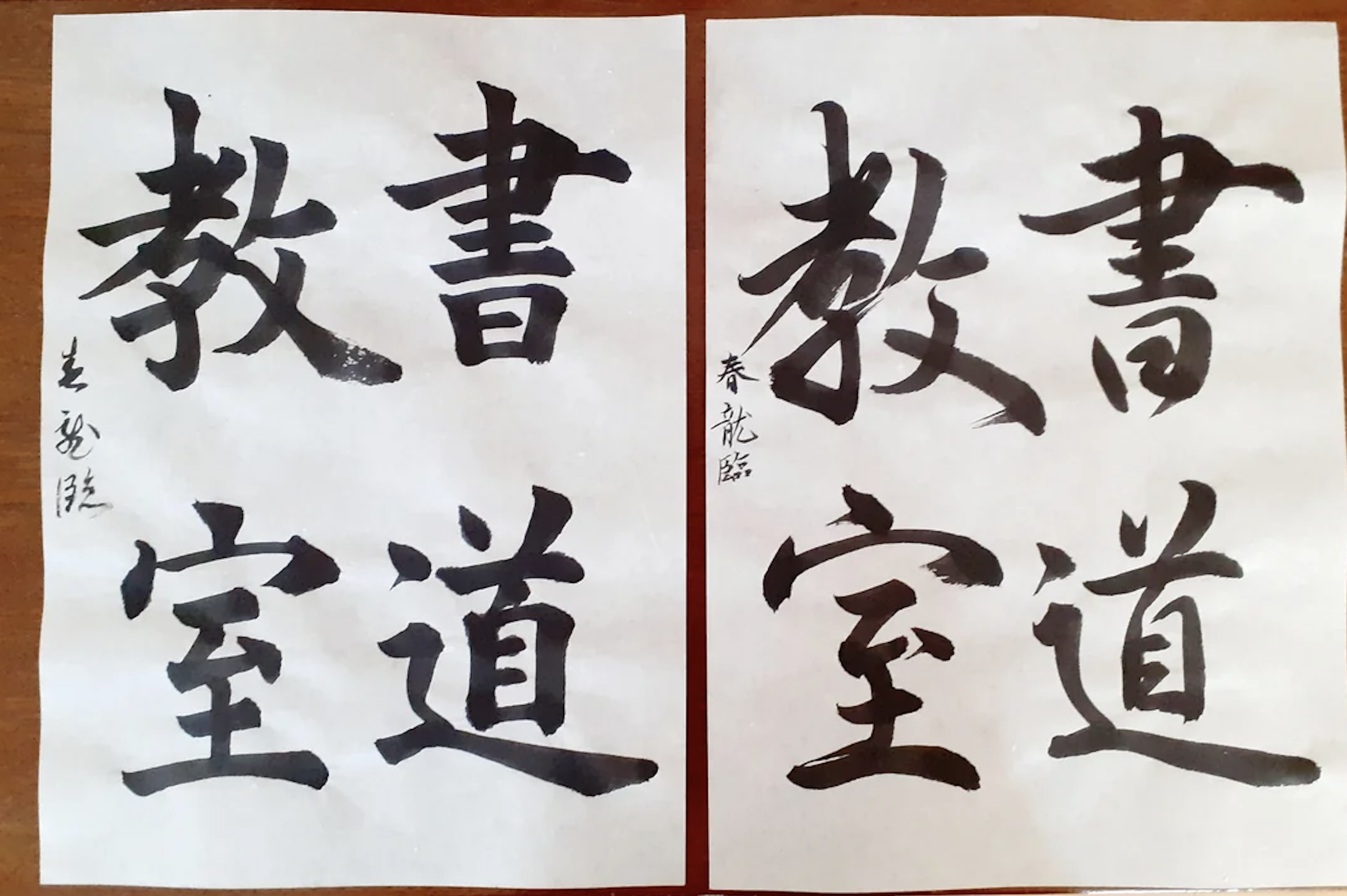
Both art forms celebrate the beauty of imperfection and spontaneity. Mistakes are embraced as opportunities for growth and expression, a concept deeply rooted in the Japanese philosophy of wabi-sabi, which finds beauty in transience and imperfection. This perspective encourages artists to approach their work with an open heart and mind, inviting the magic of the creative process to unfold naturally.
The Emotional Impact
The emotional depth conveyed through sumi-e and shodō transcends mere visuals or words. Each brushstroke carries the weight of the artist’s emotions, creating a connection between the viewer and the artwork. When observing a sumi-e painting, one can feel the tranquility of a serene landscape. The viewer is invited to engage with the piece on a personal level, often experiencing a sense of calm or inspiration. The depiction of natural elements, such as mountains, rivers, and flora, highlights the interconnectedness of all living things. This relationship between nature and art reflects a deeper understanding of the spiritual realm, where beauty and mystery coexist.
In sumi-e, landscapes serve as metaphors for the human experience. Artists paint mostly plants, animals, or natural elements like waterfalls and mountains. However, these are not mere representations of what the eye can see; they aim to capture the subject’s spirit or ”ki”. In Zen tradition, the goal is not to show what a mountain looks like but to express its essence, its energy, and its place in the universe. A solitary pine tree might represent resilience, while a delicate cherry blossom symbolizes the transient nature of life. The ability to capture these nuances through simple brushstrokes speaks to the magic of sumi-e, where every element carries symbolic meaning.
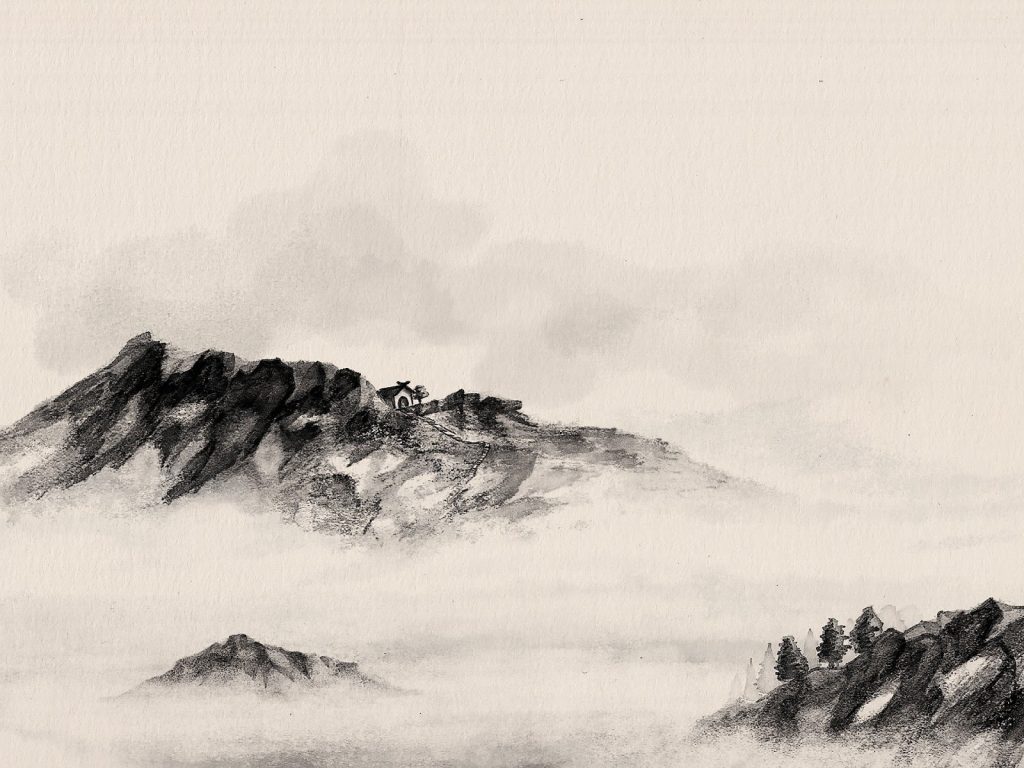
The flow of ink mimics the flow of nature: the curves of a tree, the ripple of water, or the softness of a cloud. In shodō, the flowing, rhythmic movements of calligraphy reflect natural elements, like wind moving through trees or waves crashing on the shore. The brush moves in harmony with these natural rhythms as if the artist is channeling the force of nature itself. This fusion of language and imagery creates a mystical experience that resonates with viewers, allowing them to appreciate the beauty of both the written word and the natural world.
Moreover, both art forms serve as conduits for reflection and introspection. Artists and viewers alike find solace in the act of creating and appreciating sumi-e and shodō, allowing these practices to become a form of mindfulness and meditation. In a fast-paced world, the ritual of ink painting and calligraphy offers a sanctuary for contemplation and self-discovery.
Contemporary expressions
While rooted in tradition, sumi-e and shodō continue to evolve in contemporary art. Modern artists are experimenting with these techniques, blending them with various styles and mediums to create innovative works that resonate with a global audience. The fusion of traditional Japanese art with contemporary themes allows for fresh interpretations that maintain the magic and mystery of the originals. In recent years, the popularity of Japanese ink painting and calligraphy has spread beyond Japan, inspiring artists and enthusiasts worldwide. Workshops, exhibitions, and online tutorials have introduced these art forms to new audiences, fostering appreciation for their beauty and spiritual depth. As contemporary artists explore the interplay between tradition and innovation, sumi-e and shodō serve as vehicles for self-expression and cultural exchange. The magical qualities inherent in these art forms continue to captivate individuals from diverse backgrounds, inviting them to engage with the timeless themes of nature, spirituality, and the human experience.
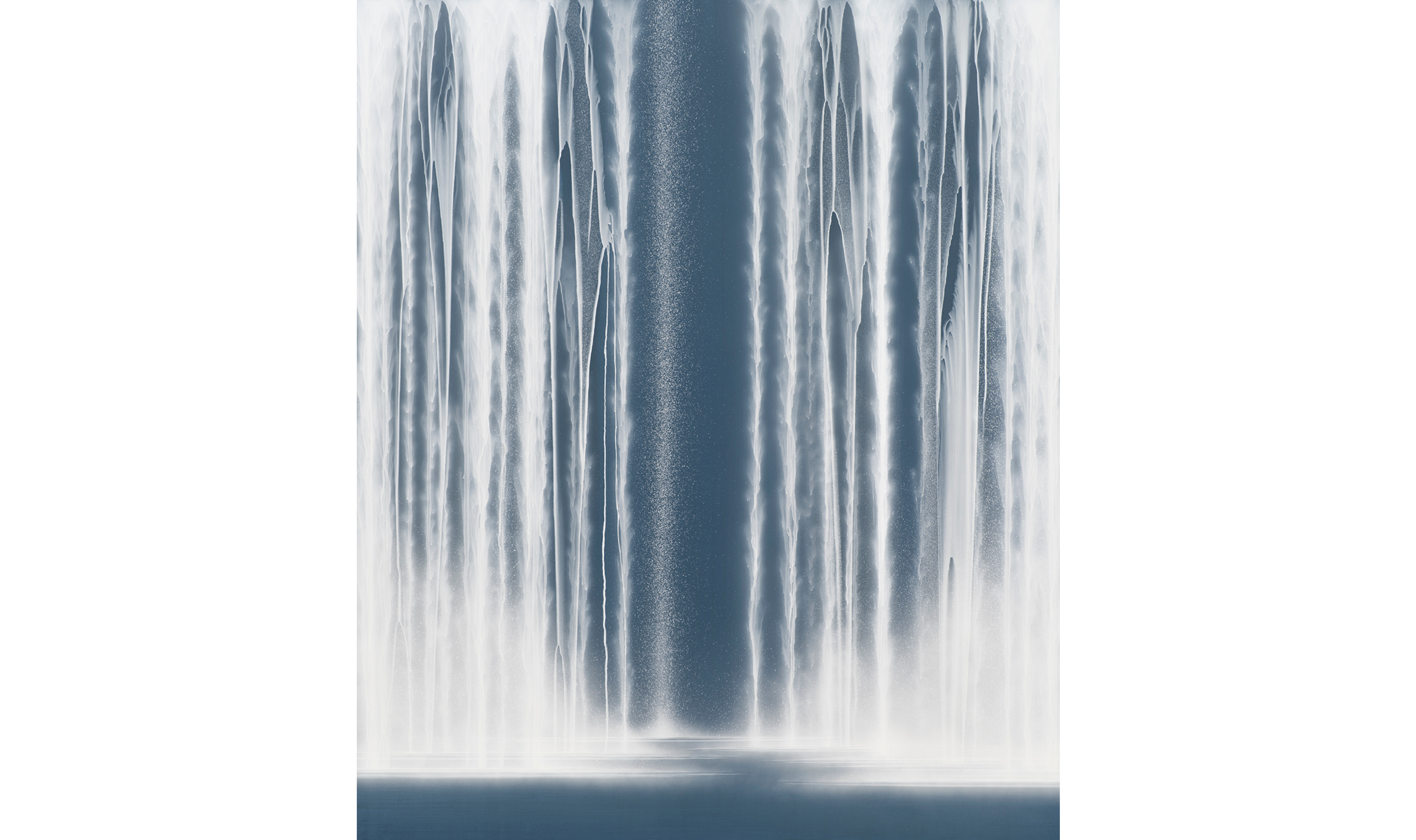
Hiroshi Senju is a renowned Japanese painter famous for his innovative approach to traditional sumi-e. Senju is best known for his large-scale waterfall paintings, which evoke the timeless beauty of nature through a modern lens. Senju merges the ancient techniques of sumi-e with contemporary minimalism. His paintings focus on natural landscapes, particularly waterfalls, created with traditional Japanese pigments on handmade paper. Through his mastery of the sumi technique, Senju captures the fluidity and movement of water, making his works feel almost alive with motion. His use of gradation in ink tones and deliberate brushstrokes adds an ethereal quality to the paintings, which convey a sense of spiritual calm and contemplation. What sets Senju apart is his ability to bridge the gap between the traditional and the contemporary. While his work maintains the simplicity and elegance of classic sumi-e, it also embraces abstraction, allowing viewers to interpret the natural forms in their way. This fusion of ancient technique and modern expression reflects his deep respect for tradition while also pushing the boundaries of what sumi-e can convey in a contemporary art context.
As the world becomes increasingly fast-paced and disconnected, the meditative qualities of sumi-e and shodō offer a sanctuary for contemplation and creative expression. In embracing the magic of these art forms, we open ourselves to the mysteries of existence, inviting tranquility and inspiration into our lives. The enduring legacy of Japanese ink painting and calligraphy ensures that their enchantment will continue to resonate for future generations.


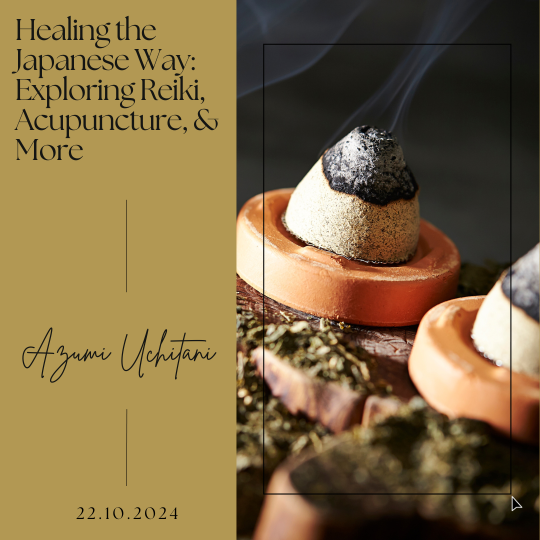
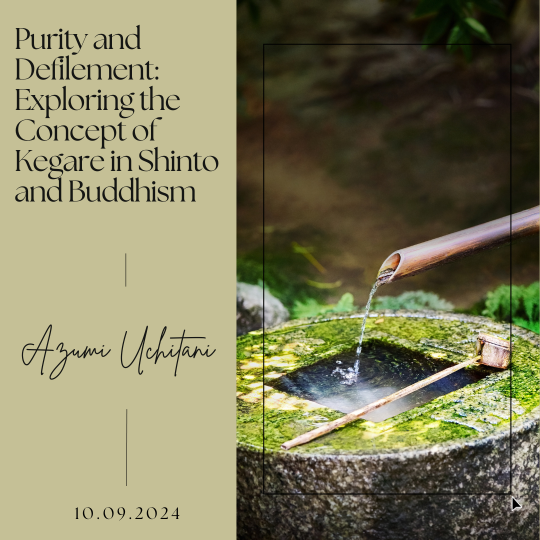
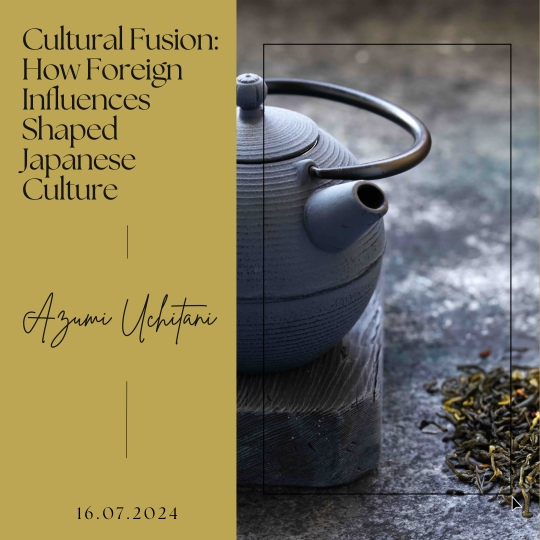
Leave a Reply